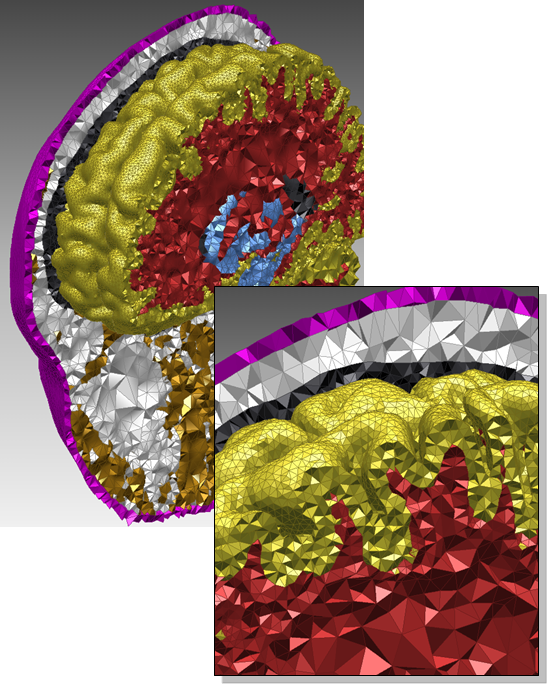Mesh generation
Meshes are becoming commonplace in a number of applications ranging from engineering to multimedia through biomedecine and geology. The elaboration of algorithms for automatic mesh generation is a notoriously difficult task as it involves numerous geometric components: Complex data structures and algorithms, surface approximation, robustness as well as scalability issues. The recent trend to use measurements or automatically generated domain boundaries adds even further hurdles.
Armed with our experience on triangulations and algorithms, and with components from the CGAL library, we aim at devising robust algorithms for 2D, surface as well as 3D mesh generation. Our research in mesh generation primarily focuses on the generation of simplicial meshes, i.e., triangle and tetrahedral meshes. We investigate both greedy approaches based upon Delaunay refinement and filtering, and variational approaches based upon energy functionals and associated minimizers.
Check the CGALmesh project
 Geometry Processing
Geometry Processing
Geometry processing is motivated by the fact that previous attempts to adapt common signal processing methods have led to limited success: Shapes are not just another signal but a new challenge to face due to distinctive properties of complex shapes such as topology, metric, non-uniform sampling and irregular discretization. Our research in geometry processing ranges from surface reconstruction to surface remeshing through curvature estimation, mesh compression and mesh parameterization. Our recent focus is on the robustness of the algorithms to defect-laden data. This focus stems from the fact that acquired geometric data obtained through measurements or designs are rarely usable directly by downstream applications. This generates bottlenecks, i.e., parts of the processing pipeline which are too labor-intensive or too brittle for practitioners.


